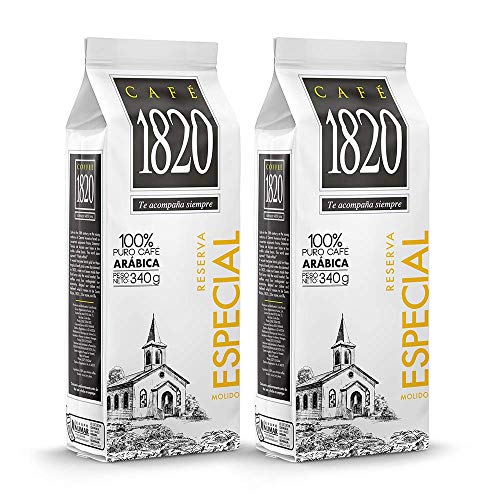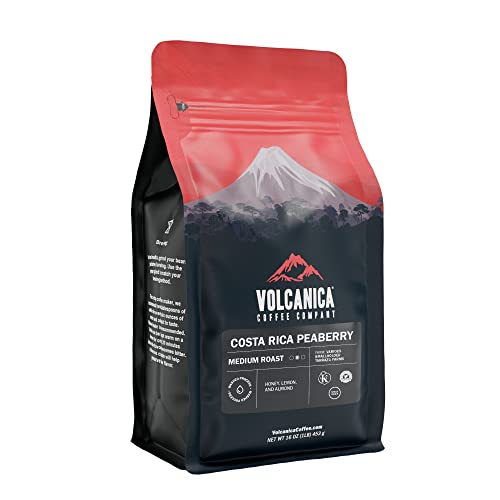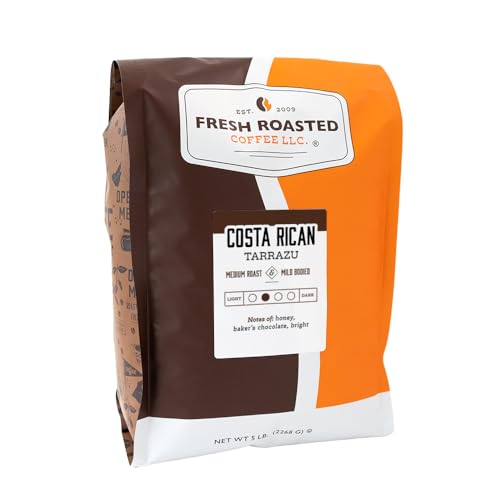Costa Rica consistently produces some of the tastiest Arabica coffee from Central America.
Table Of Contents
−- Facts about Costa Rica Coffee
- Costa Rica Coffee Growing Regions
- Coffee Processing Methods Used in Costa Rica
- Robusta Coffee is Illegal!
- The Current State of the Costa Rican Coffee Industry
- What Does Costa Rican Coffee Taste Like?
- Where to Buy the Best Costa Rican Coffee
- How to Brew Costa Rican Coffees
- Costa Rican Chorreador
- Roasting Tips
- FAQS
- Final Remark
In this piece, you will learn more about the local coffee industry, how to brew, and where to buy coffee beans at fair prices.
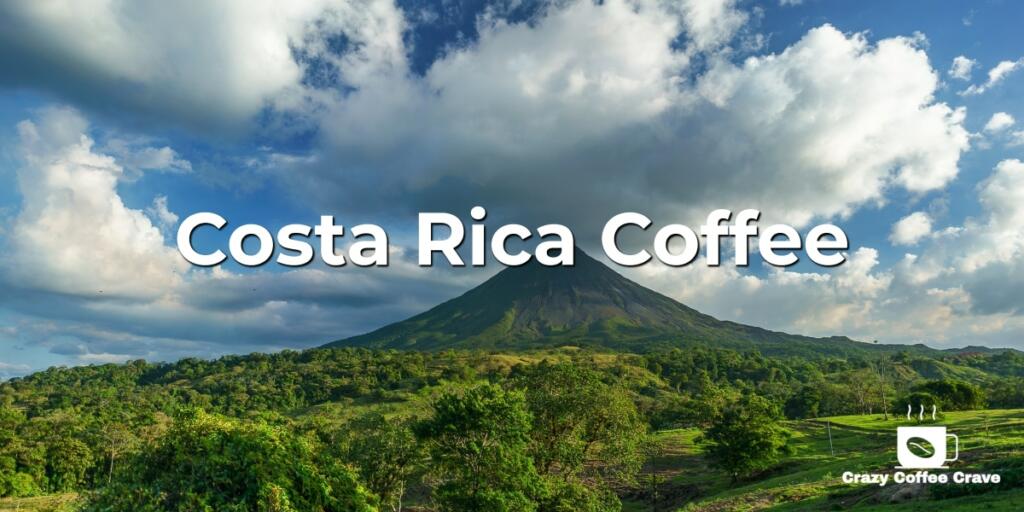
Facts about Costa Rica Coffee
- Coffee is the main cash crop in Costa Rica
- There are over 80,000 small-scale farmers in costa Rica producing coffee.
- The nation produces approximately 56.438 ounces of coffee per hectare, the world’s highest production.
- The coffee grading system includes the following classifications; SHG, GHB, and MHB.
- Coffee is certified as Bird-Friendly. Farms have trees and bird nests in them.
- Costa Rica was the first Central American Country to have a coffee industry
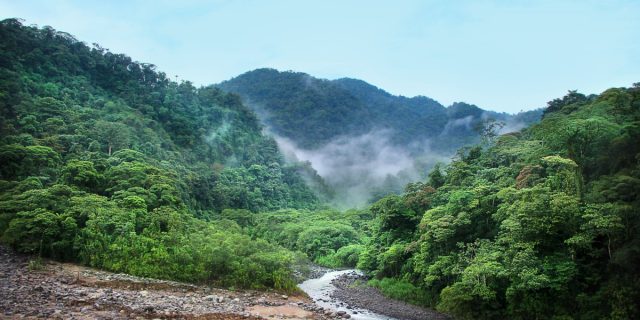
Coffee was introduced in Costa Rica in the 1700s. The ideal growing conditions helped in breeding and improving the coffee beans. Honduras and El Salvador also followed suit. While Costa Rica does not produce more Coffee like Honduras, Nicaragua, and Guatemala, it has the best quality Arabica.
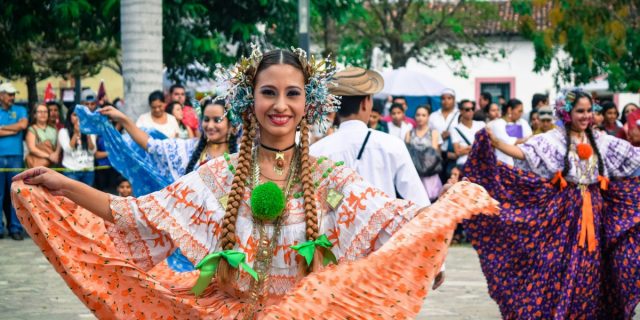
Costa Rica Coffee Growing Regions
Here are the top regions where coffee is produced in Costa Rica
- Guanacaste
- West Valley
- Turrialba
- Orosi
- Tarrazu (produces the best coffee, consistently)
- Brunch
- Tres Rio
- Central Valley
Coffee was first planted in the Central Valley near the city of San Jose. The high altitude, volcanic soil, plenty of sunshine, and rain are conducive conditions for coffee to grow. In this region, farmers enjoy nearly 80% of these conditions making coffee the ideal plant to grow.
Tarrazu is the most productive region in Costa Rica. It produces 35% of all coffee exported from this country. La Minita and Doka Estate are this region’s most known coffee producer estates.
Fun Fact: Costa Rica holds a cup in an Annual Excellence Competition for the best coffee.
If you visit Costa Rica, you can take coffee tours and have a wonderful experience.
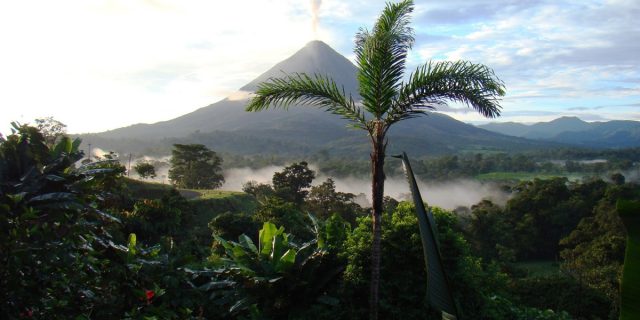
Coffee Processing Methods Used in Costa Rica
Coffee beans are processed in three main methods; washed, natural, or honey.
- Washed: it is the most used method used all over the world. Coffee cherries are put in a wet mill, and the fruit is removed forcefully by water and machines. Coffee produced in this method tastes clean and mild. Flavors can include honey, milk, or chocolate with a fruit character.
- Naturally-processed: the method is becoming popular because it is affordable compared to the washed process. Coffee will have a syrupy body with charterers of berries, citrus, and grape.
- Honey processing: in this process, only a small part of the fruit is removed. The inner layer-the mucilage or honey is left to dry on the bean. Honey-processed coffee is very sweet and has less acidity than coffee processed in other methods. Honey and molasses notes with some fruit will be tasted depending on the honey used.
Farmers leave the fruit as long as possible, allowing the coffee bean to extract more character from the frit before processing.
Robusta Coffee is Illegal!
Farmers in Costa Rica only grow Arabica Coffee. Since 1989, growing Robusta coffee was outlawed, leaving farmers with the Arabica option only.
Arabica is susceptible to weather changes and pests, while Robusta is vulnerable.
The Current State of the Costa Rican Coffee Industry
- Costa Rica experts 90% (12-15 Million bags) of its coffee annually. This represents less than 1% of the world’s coffee demand.
- 10% of the Costa Rican population depends on the coffee industry.
- 90 % of coffee farmers own less than 12 acres.
- The availability of cheap labor facilitates high production.
- San Jose, Alajuela, Heredia, Cartago, and Puntarenas are the highest coffee growing zones.
- Costa Rica is the only country in the world with an executive ban on other coffee varieties, expert Arabica.
Costa Rican coffee industry is more developed because of ‘Icafe’ (Instituto del Cafe de Costa Rica). The national coffee association was established to assist scientific research and regulate the growing coffee industry. The export tax collected by the organization assists in scientific research on soil, coffee genetics, and water analysis.
Huge investments by non-growers in micro-mills have contributed to the growth of this industry. In addition, micro mills and private investors help buy coffee at higher prices, thus improving farmers’ welfare.
What Does Costa Rican Coffee Taste Like?
Coffee from Costa Rica can be very varied, but the country’s coffee is commonly known for its lively acidity, lighter body, and smooth, soft, floral flavors.
- Tarrazu is perhaps the most popular rising area in the world. Beans in this region have an especially exciting acidity that can confuse even seasoned coffee lovers.
- The West Valley is less well known, but the area consistently produces Cup of Excellence winners, always rising coffee with toffee sweetness, smooth taste, and floral aromas.
- Central Valley has the most distinct rainy and dry seasons, enabling farmers to pursue other production methods. As a result, natural roasted coffees here tend to have a milder acidity, a heavier body, and bold aromatic flavors and sweetness.
Where to Buy the Best Costa Rican Coffee
Some local roasters sell high-quality bans from Costa Rica. Some also sell blended beans, which also taste great. Here is a list of the best Costa Rica bean distributors.
Cafe 1820
Café 1820 is a staple of Costa Rican households and eating establishments. This coffee made its debut in 1820 because of the effort of dedicated citizens determined to play their part in their country’s dream to provide premium coffee to the world. 100% Arabica, café 1820 is a true coffee drinker’s delight. Cafe 1820 is a premium coffee from Costa Rica.
Also, try Cafe 1820 Reserva Especial
The Volcanica Coffee Company Costa Rican Peaberry
Volcanica is one of the biggest retailers of gourmet coffee beans. It offers Peaberry beans, which are handpicked, making it the best quality of coffee in the world. The beans are a fruity, citrusy flavor with a sweet taste. You can order it online, and it will be shipped within a few days.
‘Fresh Roasted’ Costa Rican Beans
Fresh Roasted sells well and freshly roasted coffee beans. The roast is environmentally friendly and organic. When you order directly, it will take between 4-7 days to get your fresh coffee. You should avoid buying from Amazon retailers since you could get supplies that have overstayed. Also, the taste will not be very great.
How to Brew Costa Rican Coffees
Costa Rican coffee is washed, thus suitable for different brew methods. For example, if you have a light roast, a pour-over filter highlights the mild acidity notes in coffee, giving you the cleanest and brightest cup.
It will be great to use the French Press or an automatic dripper for a medium, medium-dark, and dark roast.
An espresso is great for a medium roast.
Using these methods, a balance in body and flavor and sweetness in the Costa Rican beans is produced. Here are the best methods;
- Coffee in a sock
- Espresso
- French Press
- Pour Over
Costa Rican Chorreador

How do the locals make their coffee? Traditionally, Costa Ricans use a chorreador to make their coffee maker. A chorreador is a wooden stand, and a cloth “sock” is used as a filter.
Though most people today use a regular coffee maker because of time, that’s how they used to make it back in the day. Thanks to the cloth filter, the chorreador has a far richer taste. In addition, the sock they use as a filter retains more flavor and does not taste plastic.
Roasting Tips
Costa Rican coffee is exceptionally versatile. It does well as a light, medium, and dark roast. Therefore, it can please everyone to their satisfaction.
Light Roast: is clean, sweet, and has mild acidity. Flavor notes range from honey and molasses to grapes and citrus. To highlight bright flavors, brew through a filter paper.
Medium Roast: emphasizes full body and pleasant sweetness. Excellent for drip coffee.
Dark Roast: these washed beans give a nice, smooth, clean cup of dark roast. An espresso or French Press produces the roast flavor.
FAQS
How is Coffee Grown in Costa Rica?
Most coffee in Costa Rica is grown on cold highlands with volcanic soil. The largest coffee zones are in San Jose, Alajuela, Puntarenas, Heredia, and Cartago. Berries are handpicked, washed, and dried in the sun or through machines.
What is Tarrazu Coffee?
Its coffee comes from the Tarrazu region. It is the highest production of Arabic in central America.
How Do You Make Costa Rican Coffee?
Traditional coffee is made by pouring over coffee (‘Chorreador de cafe‘). Then, hot water and the grounds are filtered into a cup. It is that simple.
Final Remark
Costa Rica has the best Arabic coffee, which is sold worldwide. The magical growing conditions and infrastructure contribute to high coffee production.
Disclaimer: This post contains affiliate links, which means I may receive a small commission, at no extra cost to you, if you make a purchase using these links. Remember to support us by purchasing through the Amazon/Walmart/Impact Radius links provided. Last update on 2024-05-01 / Affiliate links / Images from Amazon Product Advertising API
Disclosure: No compensation or free products were received in exchange for writing this review.

Editorial Staff
The editorial staff at Crazy Coffee Crave is a team of coffee enthusiasts & Baristas who enjoy the one thing we all think about as soon as we get up in the morning. Trusted by thousands of readers worldwide.


